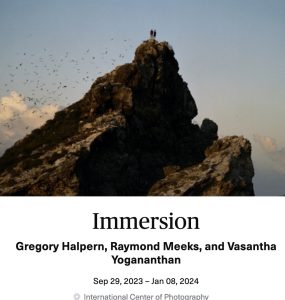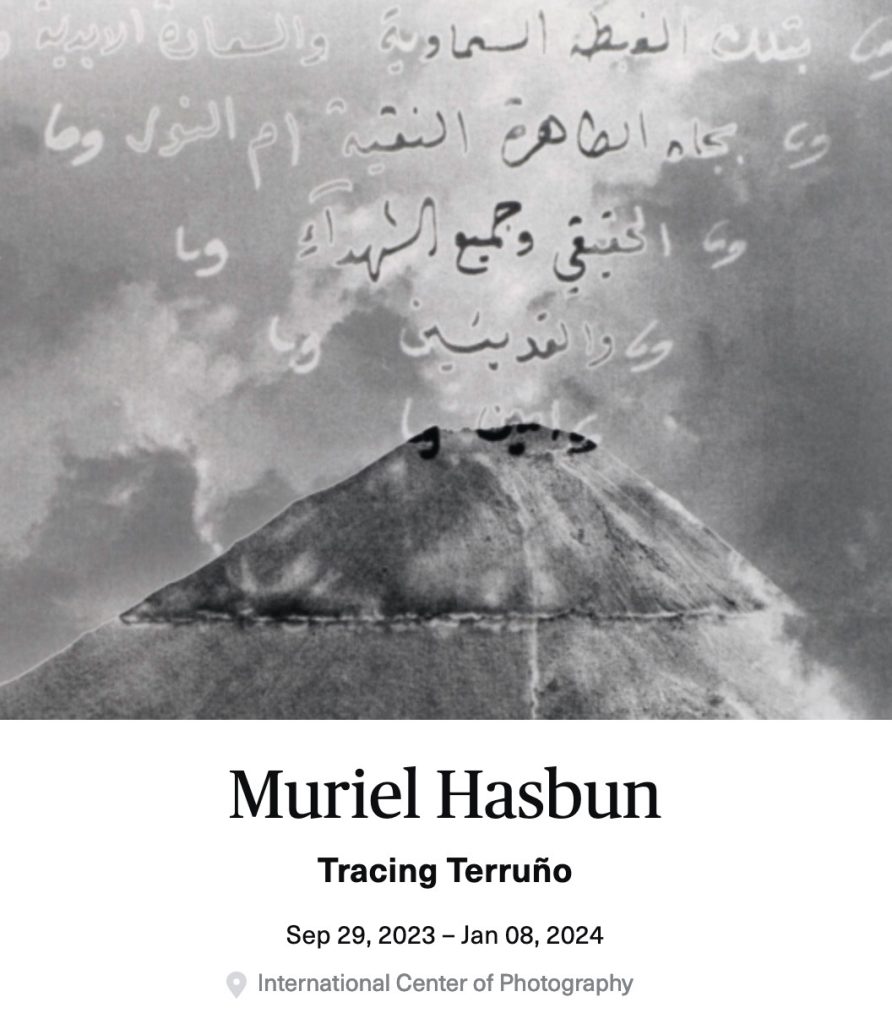I recently visited the International Center of Photography for the first time ever. Located at 79 Essex Street in lower Manhattan, between Delancey and Broome Streets, not far from where I live. It lays claim to being the world’s leading institution dedicated to photography and visual culture. At that time of my visit, I had not researched its history, past, and present exhibitions, nor any of the artists’ work on display, so when I entered the space, I was unsure of the museum’s aesthetic style or curatorship style.
Before visiting the museum, I had this thought about Walter Benjamin’s article about the aura of art. I am a child of the Internet and social media. Considering the constant flow of images and media consumption, I feel conditioned not to focus on images. I rarely remember images I consume daily that resonate with me.
When I travel to museums or galleries, there are times I skim and skip artworks, just like as though I scroll through Instagram on my phone. As a result of how I have been conditioned to consume media and images, I bundle them. It all can become blurry. My attention is not drawn to anything particular.
The ICP’s lobby felt warm and welcoming, with a cafe, gift shop and ticket table all in one area. Additionally, the museum has only two floors above the first, and the largest is on the second. The museum feels less intimidating as a result. I walked around the two floors of the space before viewing the art. The space is relatively small compared to other museums and galleries, so I expected a short viewing. Yet, somehow I spent two hours looking at the pieces, walking back and forth, and reexamining them.
Visitors didn’t have to worry about security guards standing at every corner if they wanted to view the works up close. Here is an example. Raymond Meeks books, although I did not move anything at the time, could be flipped through. In fact, I even touched the wall with a giant photo taken by Vasantha Yogananthan. Within a short period of time, I was more engaged and engrossed in the art. Both Immersions: Gregory Halpern, Raymond Meeks and Vasantha Yogananthan and Mariel Hasbun: Tracing Terruño flowed well together.
Initially, I started on the Hasbun side, not realizing I was on Meek’s until I saw the rusted metal with unframed photographs and another page with a shelf.
Describing the second floor generally, I liked how some photographs were pinned down on the walls and some were hung on the walls. Workflow feels more personal and welcoming. In a way, their collaged and hung images reminded me of my own walls or a fridge full of flyers at home. Many images were also at eye level or large enough for me to move far and up close.
This was to fully view them individually or within a cluster. Another thing I liked was that the title and description of several artworks could be found on one wall label at a time: The flow of viewing the works as a series continues. I was immediately drawn to Hasbun’s sounds as soon as I entered the second floor.
In addition to the video, another stereo played a conversation she had with her mother near the piles of volcanic rock. The sounds combined sounded uncanny, like yearning. Watching the video, I noticed there were at least three different parts about her father and mother. One quote that struck me was how only a son knows who he is if he knows his mother.
During this exhibition, visitors are guided through Hasbun’s experiences. They can examine her own complex identity, family lineage, geography, borders, and home. I was intrigued by the four pictures next to the English and Spanish introductions in the exhibition’s physical space. These pictures can lead the viewer’s eye to the video wall at the entrance. It wasn’t until later that I realized there was an image called Je me souviens. Three times during the exhibition, this image was displayed: A the beginning, the middle and at the end.
According to the plaque, this is the first portrait Hasbun created of her family. Her maternal grandmother, Gouta, wore a handcrafted dress and held a family photo depicting France’s liberation from the Nazis. The prints were framed differently and the sizes varied, but I like how this became an icon or motif that we always return to. The instinct of returning to a maternal figure is also so powerful.
In a dark area, the space between the wall and the sitting area wasn’t enough to view the full screen. Walking through the exhibition felt like walking through a birth canal, since the walls and ceilings were so white, and most of the pictures were framed in white, but I also felt like I had reached a higher level of consciousness.
While Hasbun works in a variety of mediums, I would like to focus on three works or series that stood out to me. Firstly, we had gelatin silver prints of all the teeth. It might be just me, but I enjoy looking at teeth, bones, and other signs of life left behind after a person or thing died. I was unsure how Hasbun created the work. However, I believe it has to do with her father being a dentist and her work with his X-rays. Image making through direct contact with an object, such as X-rays, fascinates me. I am reminded of Joseph Nicephore Niepce’s Heliograph, William Talbot’s photogenic drawing negative and Anna Atkins’ cyanotype.
The aesthetics of a direct contact negative is very appealing, and the way the teeth are scattered or arranged looks natural like pebbles or rocks found on beaches or hiking trails, but it’s not natural at all since they are no longer an integrated part of a jaw. The second series that I really liked was the linen that belonged to Gouta, images that tell the story of her mother’s life surviving World War II as a Paris born Ashkenzi Jew, and the red rocks found in both the Auvergne terrain of her mother and the El Salvador terrain of Hasbun.
It seems like most things will break down eventually with the linen edges fraying and linen being cut in squares. It also feels very homey with the linen hung up on metal strings, like clothes hung outside to dry. This image is a hand-applied gelatin silver emulsion print. It’s interesting to know that gelatin silver prints can be extremely dark and deep. However, when printed on linen, fabric texture comes through. The images themselves seem almost apparition-like, with the combination of prints and marks that extend beyond the edges of the image.
Some are landscapes, others are close-ups of faces and hands, and some are texts. A snapshot of various subjects and the scattering of rocks on the fall make visitors think about Hasbun’s own experience and her family’s experience of being uprooted and displaced.
The last series I want to highlight is Esther, her cousin. It is beautiful to see Esther’s hand holding a notebook of poems she wrote during her time in a concentration camp. With crinkly twine holding the graph paper together, I feel this shows the importance of art and the resistance of the human spirit. This is when everything was taken from them. There are five images in the series of Esther. The first shows her closing her eyes, followed by a negative of flowers or branches. The next image illustrates her nearly completely fading away. Thirdly, the image seems like an inversion of negatives and positives that look like thermal cameras. Fourthly, the word Esther looks almost graffiti-like. And, fifthly, there are layers that resemble rings or auras.
Hasbun’s constant search for familial connections is refreshing, since most of us know nothing about other families due to wartime separations. Esther is also an older person, and in the picture she seems almost at peace. This shows that not everything can be resolved and time will take its course. The multiple layers of negatives remind me of Henry Peach Robinson’s combination prints. The softness reminds me of Hill and Adamson’s unfocused qualities that show a different side of an individual.
As a whole, I found both exhibitions very successful in terms of the way they were curated. In addition, the stories they shared. This series of pictures makes you question what it means to have meaningful relationships and places that become empty when people die or move away. Just looking at the images in this show makes me think about what it means to be alive. I also think about the power of images that represent home, family, and relationships.
Coco Lin can be reached at coco.lin19@myhunter.cuny.edu


